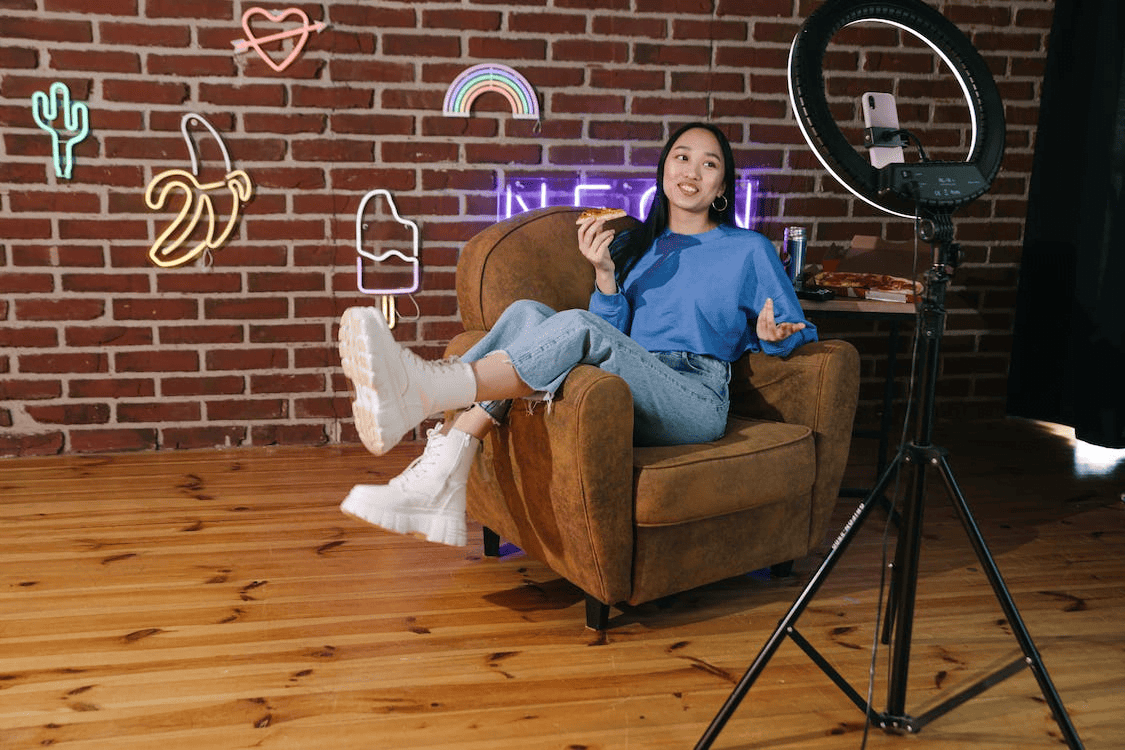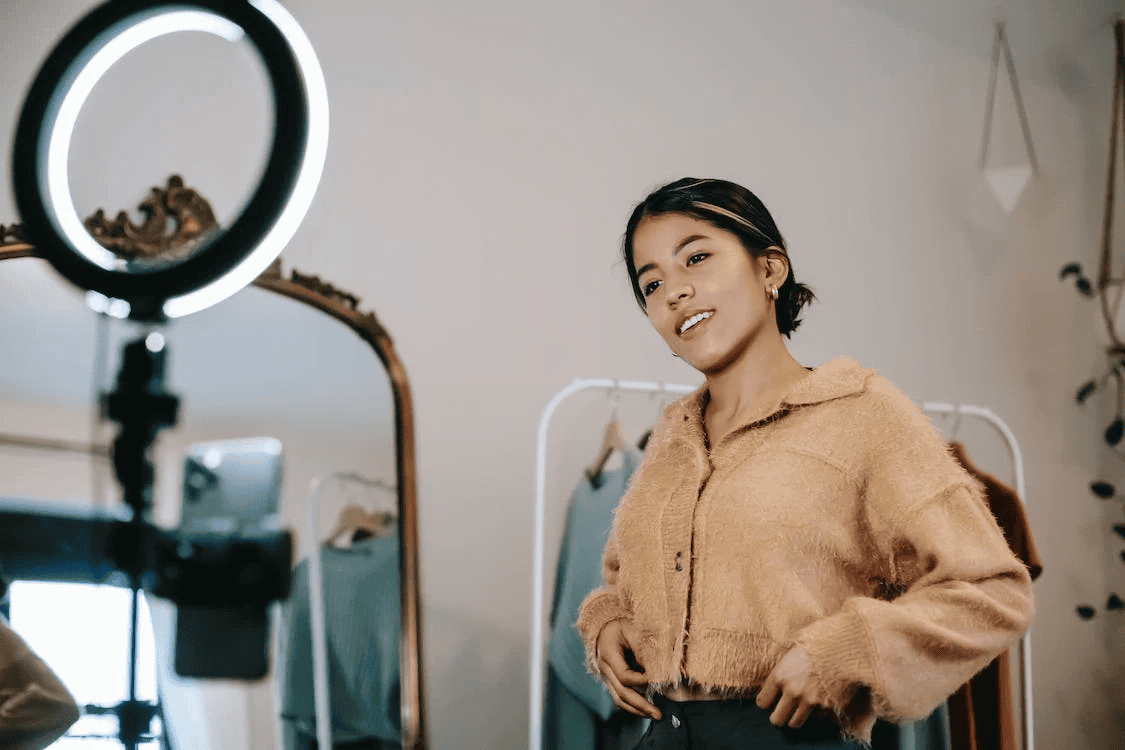Over the last decade or so, social media influencers have become a key part of the digital landscape. Their ability to draw the attention of significant audience numbers makes them an invaluable tool to marketers. As social media develops and becomes a more powerful presence in consumers’ lives, the value of influencers is likely to continue for the foreseeable future.

Image Source: Pexels
However, it’s important to recognize that influencers aren’t just tools large brands can utilize. Even relatively small companies have access to brand partners that fit both their budgets and positively impact their goals. Content creators in niche areas may have lower follower growth, but they can make a significant difference as part of any marketing campaign.
Let’s take a look at how you can utilize niche influencers to increase your sales conversions.

Image Source: Pexels
Why Niche Influencers Are Powerful
Why should you utilize niche influencers rather than their more broad counterparts? It’s important not to fall into the trap of thinking that greater reach equates to more engagement. Indeed, nano-influencers with 1k to 5k followers and micro-influencers with 5k to 20k followers significantly outperform macro and mega-influencers in this area. As such, if your goal is to increase conversions, you’re likely to see a better return on investment (ROI) from niche influencers.
You’ll also find that niche influencers are likely to have better relevance to your brand. Your company is not just the product it sells, but also its culture. Your business has unique aspects that should be celebrated and you’re likely to find a niche influencer that more closely represents these. The more relevant you are to the influencer, the easier you’ll generally find it to build trust within the community they’ve gathered, too.
Another reason to work with niche influencers is they can better help you to connect authentically with your demographics. It’s important to remember that each generation has its own set of spending and saving habits and hurdles. For instance, Millennials are often more financially pessimistic due to their experiences with the 2008 stock market crash and high loan debt levels. By collaborating with a niche influencer of the same demographic, they can give you insights into what content can resonate with others of their generation.

Image Source: Pexels
Find Niche Influencers
Once you’ve established that a niche influencer is right for you, you then need someone to work with. Your first step is to gain a better understanding of your target customers so you can match with the best content partner.
Analyze Consumer Data
Creating consumer personas, or a single customer view (SCV), is a practical way to learn about your consumers through their data. This data can include:
- Brand interaction — like purchase history, cart abandonment info, and customer support engagements;
- Web, mobile, and site behavior — including clicks and page interaction on apps, social media, or e-commerce sites;
- Offline data — including personal data, like phone numbers and email addresses.
Essentially, you’re gathering and organizing information about the customer journeys of users from different demographics. With SCV data, you can easily identify the marketing needs and preferences of each customer type and start your influencer search on this basis. Once you have this information, you’ll want to:
- Find the average of each data point;
- Synthesize the data into one, unified picture of a target customer;
- Create an SCV that you and the entirety of your team can refer to;
- Tweak it every so often.
This can be a one-and-done process, but it typically shouldn’t be. The needs and behaviors of your target audience will likely change with time, and your SCV should adapt to those changes. This way, you’ll always have a clear idea of the type of influencer audience to strive for with influencer marketing.
Solve Influencer and Audience Pain Points
Your ideal consumer persona may overlap quite a bit with the profile of a niche influencer. You want someone who has a small yet engaged following in your niche and that would be in the market for your product — before you even reach out.
Of course, you can introduce them to your product for the first time. In any case, you want to be able to solve a pain point for them and their direct audience. Otherwise, your interactions may be futile. Using the SCV you crafted out of the amalgamation of your customer data, you can more accurately guess these pain points. Then, you can let influencers know how your product or service can address their needs. This way, they’re more likely to genuinely give it a try and show it to their relevant audience.
Meet Influencers Where They Are
You then need to search for the most relevant social media platform for content creators in your target niche. Usually, there will be common hashtags for specific subject areas. Look for users creating consistently popular content in relation to these hashtags. You can then look at the follower counts and whether they align with the demographic profile of the consumers you’re targeting. Don’t just look at age but also the lifestyle suggested by their posts and the comments from followers.
There are certainly tools you can utilize to measure the level of engagement of content creators’ posts. However, it’s important you also put the work into viewing their content. Assess whether their approach to recommending products effectively provides social proof to viewers. Consider whether they consistently interact with their followers in meaningful ways. This tends to result in parasocial relationships in which audiences feel greater empathy and affection for a content creator. The result of this can be that these consumers may be more likely to follow influencers’ recommendations.

Image Source: Pexels
Collaborate Closely
It’s important to remember that working with niche influencers isn’t like most business investments. You aren’t necessarily simply paying for a service. In the majority of cases, you’re likely to get the most positive results if you approach the matter with the mindset of building a mutually positive relationship. This project should be a close collaboration.
Collabs Start When You Reach Out
This should be evident from your first outreach with the influencer. Some will have a dedicated business email address on their profile, though many will be fine with you direct messaging (DMing) them via the social media platform. When you email or DM them, let them know a little about your brand, what you like about what they do, and why you think working together could be beneficial for you both. This shows the influencer that you’ve taken the time to genuinely engage with their content.
Research Influencer Pay
Make sure to go into influencer outreach with some expectations of what you will pay. Make sure that you are willing to budget influencer marketing according to industry standards. You can find influencer marketing prices online that have a general overview according to reach. Currently, this looks like:
- Nano-influencers: $10 – $100 per post;
- Micro-influencers: $100 – $500 per post;
- Mid-tier influencers: $500 – $5,000 per post;
- Macro-influencers: $5000 – $10,000 per post;
- Mega-influencers: $10,000+ per post.
You will most likely be reaching out to niche influencers that fall in the “nano” or “micro” categories — a.k.a., anywhere from 1,000 to 50,000 followers. This, of course, depends on your industry and the social platform. For example, TikTok has a unique algorithm that allows its users to gain a higher following than other social platforms, so you would adjust accordingly.
Be Open to Change
There will certainly be some negotiations surrounding compensation and so forth. During this process, it’s important to make it clear how you both expect the relationship to proceed. Sometimes, companies send out free products to niche influencers without any review expectations. This is a way to elicit genuine reviews. However, it’s not always guaranteed that they will post about your product often, if at all.
If you do decide to pay for sponsored posts, agree on the content subject matter and be upfront about the type of company messaging and calls to action (CTAs) you want to include. For example, TikTok lets users embed a CTA button in influencer videos. If they’re open to the idea, collaborate creatively but give them the space they need to do what they already do well. You should also establish any processes for content approval if necessary. This helps to make sure your partnership starts on a positive foot.
Follow Up
Keep track of niche influencer posts when working with them. This way, you can track the direct influence that these collaborations have on your brand. For example, take note of:
- How many unique influencer codes are used for purchases;
- Conversion rates from direct links in social posts;
- Click-through rate for influencer-specific URLs to your site;
- Engagement on sponsored posts, including feedback in comments;
- Overlap with their audience and any new brand followers.
You can use this information to track the success of your influencer marketing campaign — and decide how to move forward. If you want to work with the same influencer again, reach out to them to maintain the relationship. If not, thank them for their time and express your gratitude for giving your brand a chance.
Image Source: Pexels
Quick guide on finding Niche Influencers
Niche influencers have lower follower counts, but the statistics show they garner excellent engagement rates. By partnering with the right nano or micro-influencer, you can leverage the credibility they’ve built with their audiences. Finding the most appropriate content creator benefits from understanding the customers you’re targeting. You can then utilize their needs and preferences to drive your search. Perhaps most importantly, approach your campaigns with niche influencers as close collaborations. The stronger relationships you build, the better outcomes you’re likely to gain.


